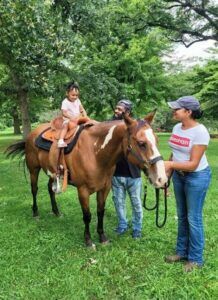- Horse Rookie
- Posts
- 99 Fun & Incredible Horse Facts for Kids
99 Fun & Incredible Horse Facts for Kids

Learn All About Horses!
Horses are wonderful, beautiful, and interesting creatures. Kids and adults, alike, love learning all about them — and we’re here to help. Boost your horsey know-how, and test your knowledge 🙂
1. “Equine” is another word for a horse (or member of the equine family). That’s why people involved with horses are called “equestrians.”
2. With proper care and nutrition, domesticated horses usually live between 25-30 years.
(Source: Ensminger, M. E. (1990). Horses and Horsemanship: Animal Agricultural Series)
3. A horse named “Old Billy,” from the 19th-century, lived to be 62 years old. Old Billy’s breeding is unknown, but it’s believed he could have been a Shire, a cob, or a combination of the two. Old Billy was bred by Edward Robinson in Lancashire, UK and died on 27 November 1822.
(Source: Ensminger, M. E. (1990). Horses and Horsemanship: Animal Agricultural Series)
4. A baby horse is called a “foal” between the time it’s born until it reaches one year of age.
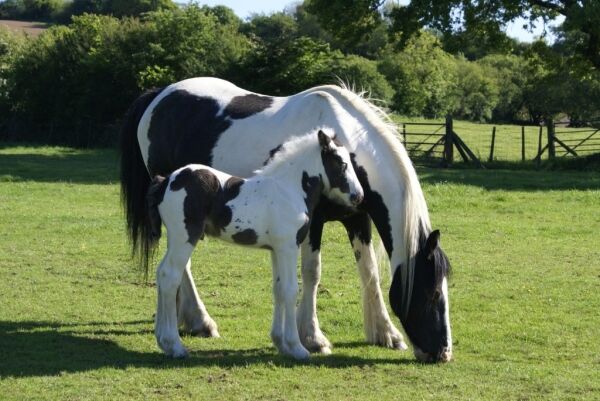
Mare and her foal (Source: Pixabay)
5. A male or female horse between the age of one and two years is called a “yearling.”
6. A female horse who is under four years old is called a “filly.”
7. A male horse who is under four years old is called a “colt.”
8. Once a female horse is older than four years, she’s called a “mare.”
9. Once a male horse is older than four years, he’s called a “gelding” or a “stallion.”
10. A gelding is a male horse that had a medical procedure so he is not longer able to father baby horses.
11. A stallion is a male horse who is able to father baby horses.
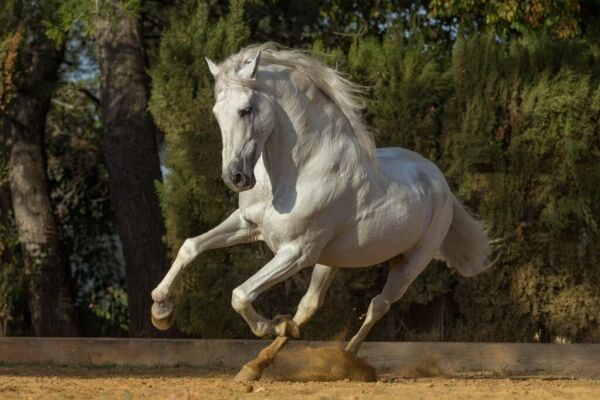
12. For things like competitions and races, all horses share a “official” birthday of January 1 — even if they were born on a different date.
13. Though we measure human height in feet and inches, horses are measured in “hands.” Each hand is equal to four inches.
14. Instead of measuring from the ground to the top of a horse’s head, though, we measure to the top of its wither. The wither is a curved bone between the base of the neck and beginning of the back.
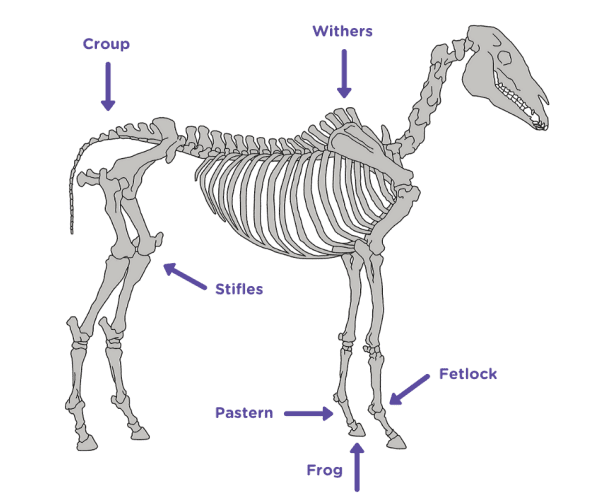
Horse Anatomy (Source: Pixabay)
15. The smallest horse on record, as of 2020, is Thumbelina at 17 inches tall and 57 pounds. She is a miniature horse, or a very small horse. Plus, she has a condition called Dwarfism, which makes her even smaller!
(Source: Douglas, Jeff (2007-03-19). “World’s smallest horse has tall order”. The Washington Post. Associated Press.)
16. Even if a horse looks white, it almost always has a grey coat that has simply lightened with age. Underneath it’s a coat, a grey horse’s skin is dark grey or black, whereas a white horse will have pink skin. It’s very rare for a horse to be truly white.
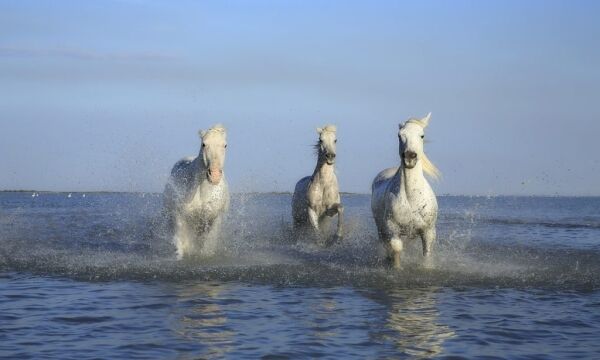
Most “white” horses are actually grey (Source: Pixabay)
17. Female horses are pregnant for between 320-370 days.
(Source: Ensminger, M. E. (1990). Horses and Horsemanship: Animal Agricultural Series)
18. A horse’s skeleton has about 205 bones. This is really close to the number of bones adult humans have, too.
(Source: Evans, J. (1990). The Horse (Second ed.). New York: Freeman. p. 90. ISBN 978-0-7167-1811-6. OCLC 20132967)
19. A horse’s feet are called “hooves.” They typically need to be trimmed by a special person called a farrier on a regular basis.
20. Unlike humans, horses are unable to throw up (vomit). This is because horses have a special valve at the entrance of their stomachs that prevents food from returning to the mouth.
21. A horse’s eyes are located on the sides of its head — not the front. This means it can see anything approaching from the side, but has a blind spot immediately in front of its nose.
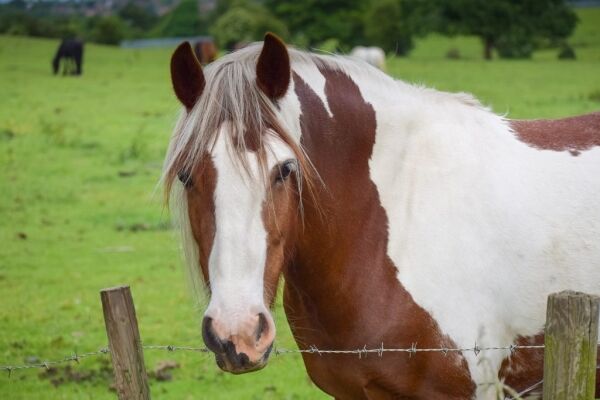
Horse eyes are located on the sides of the face. (Source: Pixabay)
22. Each horse ear can rotate 180 degrees (i.e. half a circle). That means horses can hear a full circle around them using both ears.
23. Horses can sleep standing up, thanks to a special “stay apparatus” that enables them to lock the main joints in their legs. They also sleep lying down.
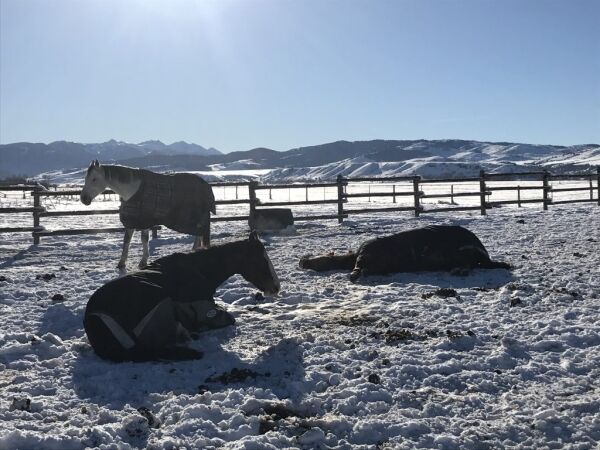
How horses sleep
24. The most common horse gaits (i.e. movements), in order of slowest to fastest, are walk, trot, canter, and gallop. Some horses are called “gaited” because they have additional gaits. Icelandic Horses are gaited horses that perform the the tölt and the skeið, in addition to the walk, trot, and canter.
25. Horses are herd animals, meaning they like to live together in groups.
26. Periodically, horses need to have their teeth “floated.” This means a specially trained equine dentist removes sharp edges and makes sure the horse can chew properly.
27. If a female horse and male donkey breed, the baby is called a “mule.”
28. Horses can be ridden, but they can also pull carts and other heavy objects. Different breeds are most suited to pulling than others, with draft horses excelling in this field.
29. Many police departments uses horses to patrol their communities and encourage people to interact with them.
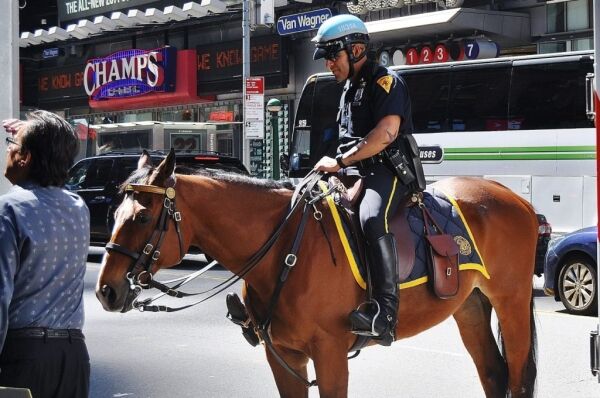
Police horses can help engage the public. (Source: Pixabay)
30. A horse’s primary diet consists of grass, hay, and (depending on the horse) grain.
31. Horses are herbivores, meaning they eat a plant-based diet instead of meat.
32. When you see a horse that seems to be smiling, he’s actually smelling the air. By curling up its top lip, the horse stimulates the vomeronasal organ to amplify smells.
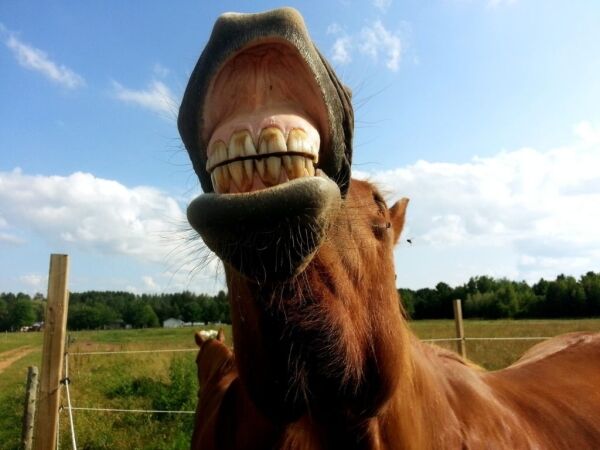
It looks like he’s smiling, but he’s smelling! (Source: Pixabay)
33. When horses need to be moved to another location, they’re often driven in a trailer or horse box.
34. As a full-grown adult, a horse’s brain weighs around 22 oz, which is roughly half the weight of an adult human brain.
(Source: The Equinest – https://www.theequinest.com/random-horse-facts/)
35. If you lift up a horse’s hoof and look underneath, the triangle part in the center is called the “frog.” The frog gives the horse’s hoof more traction, and shock absorbency, and also stimulates blood circulation.
36. If you breed a donkey and a zebra, the offspring is called a “zonkey.”
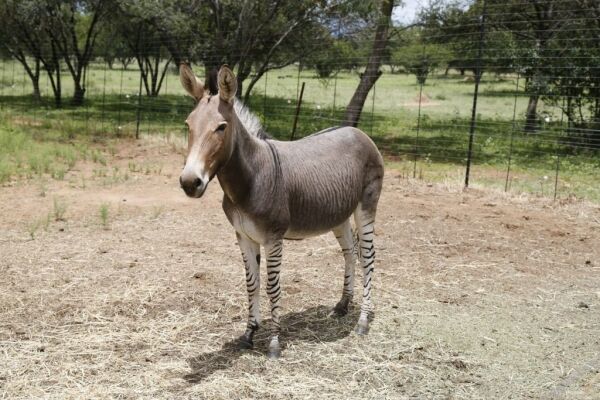
Donkey x Zebra = Zonkey! (Source: Pixabay)
37. Some of the most common treats horses like are carrots, apples, and peppermints.
38. The equipment people use to ride horses is called “tack.” Tack includes things like a saddle, saddle pad, stirrups, girth, bridle, bit, and reins.
39. The reason people shouldn’t ride in tennis shoes is because this type of shoe doesn’t have a proper heel. The heel is what helps keep your feet from accidentally going through the stirrups and getting caught. When riding, you should always wear boots or shoes with a heel that’s at least 1-inch tall.
40. Barrel racing is a sport where horse and rider run at top speed around a set of 3 barrels set up in a triangle pattern. Whoever leaves all the barrels standing and finishes the pattern the fastest wins. (Check out Fallon Taylor‘s vlog!)
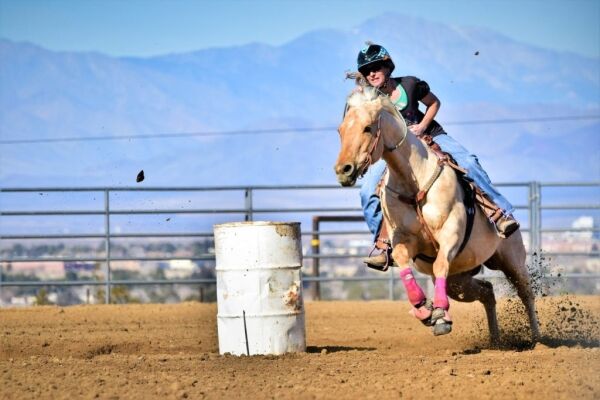
Barrel racing (Source: Pixabay)
41. When riders jump their horses, they should wear a body protector and/or an air vest. This helps protect their chest and organs in case of a fall.
42. Skijoring is a sport where a horse and rider pull a snow skier behind them at full speed. The skier navigates a course with jumps, and whoever completes the course fastest wins.
43. “OTTB” stands for “off the track thoroughbred.” These are horses that used to race at the track but now do other activities instead.
44. A bit is a piece of metal (though it also can be made of plastic) that goes in a horse’s mouth to help steer it. There are many different types of bits, and it’s important to find the one your horse likes best. There are also “bitless” bridles available that don’t have a bit at all!
45. You should always wear a proper helmet horseback riding. Helmets should be replaced every 5 years, or sooner if your helmet hits the ground in a fall.
46. American horse trailers are typically “slant load” or “straight load.” That means the horses either stand at a 45-degree angle or straight facing forward.
47. A “cowy” horse is one that demonstrates a higher-than-average natural ability for working with cattle.
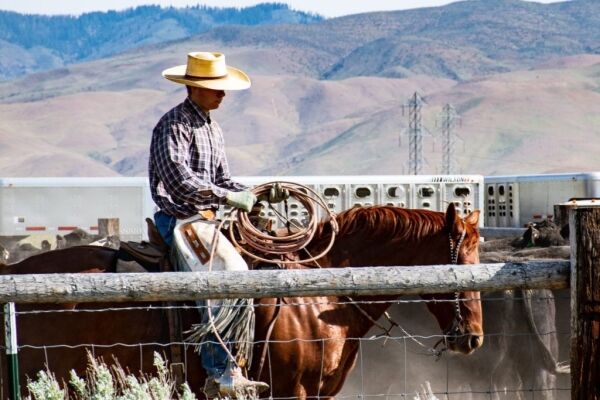
Source: Pexels
48. When a horse puts its ears all the way back and flat against its head, that’s called “pinning the ears.” It’s a sign that the horse is upset about something, so be extra careful around it if you see this behavior.
49. The most popular horse breed in the United States it the American Quarter Horse.
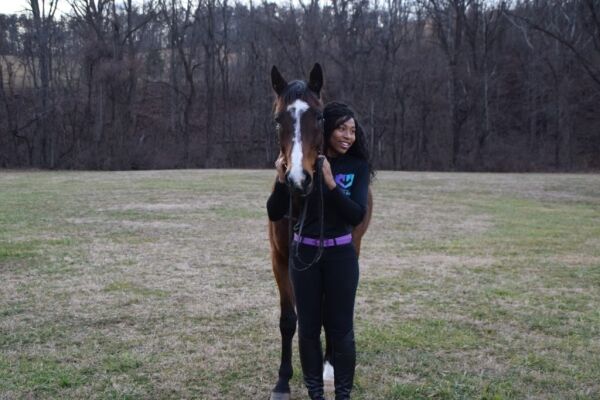
Source: Emily Harris
50. A typical horse eats about 20 pounds of hay or grass per day.
Looking for a kid-friendly horse movie the whole family will love? Check out our review of Horse Camp: A Love Tail.
51. “Grooming” is the term used to describe the activities of brushing a horse and getting it ready to ride. Often this includes brushing the horse’s coat with several types of brushes, cleaning out the hooves, and combing its mane and tail.
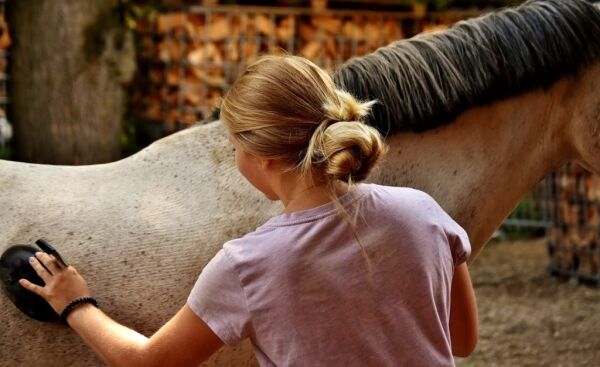
Grooming a horse (Source: Pixabay)
52. Cleaning poop out of a horse’s stall is called “mucking out.” Wear the right boots for this dirty job!
53. There are two common types of jumping competitions — hunter and jumper. In hunter classes, the horses and riders are judged more critically on their appearance over and between the fences. In jumper classes, appearance doesn’t matter — it’s all about clearing the jumps in the least amount of time.
54. Horses are expensive! Depending where you live and what you do with your horse, it may cost (on average) between $1,800 and $18,000 per year. (Check out our monthly horse expense reports.)
55. When horses get older, it’s common for their backs to lower or sag. This is called “swayback.”
56. “Colic” is a common illness among horses. It’s like a bellyache, except it can be fatal as it can cause stomach can rupture.
57. The average horse needs to drink about 10 gallons of water per day.
58. Horses need 30-60 minutes of deep sleep each day, but they lightly doze a lot more than that.
59. The trot can be a bouncy gait, so many riders will “post” while trotting. This means they raise their seats up and down every other beat to make it more comfortable.
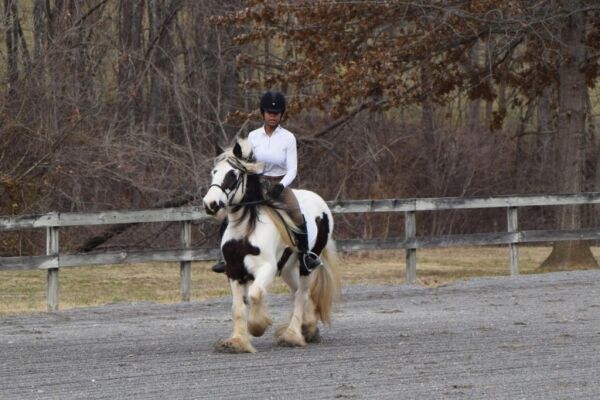
Source: Sarah Harris
60. You can teach horses to respond to clicker training, just as you do with dogs. You can use clicker training to get rid of unwanted behavior or develop new skills and tricks.
61. Horses come in LOTS of different colors and markings. Here are some of the most common ones:
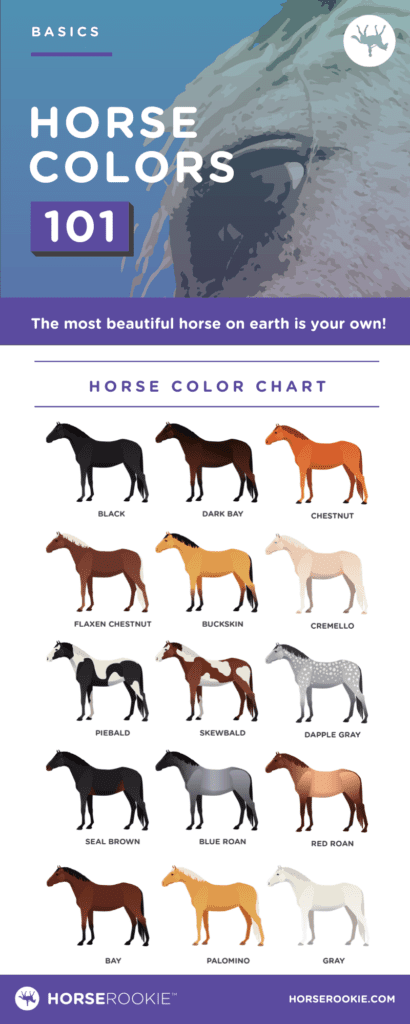
Chart of common horse colors (Credit: Horse Rookie)
62. Not all horse time is spent in the saddle. When you train horses from the ground, it’s called “groundwork.” This often takes place in an enclosed area called a “round pen.”
63. One of the most magical moments of groundwork is the “join up.” This happens once you’ve moved the horse around the pen and it accepts you as its leader. It will then stop and turn to look at you. Often, it will even walk right over to you, then follow you around.
64. When you’re jumping in a competition, knocking down one of the jumps (“rails” or “fences”) gives you four “faults.” This means four points are subtracted from your score. If your horse refuses to jump a fence, you will also be deducted four points, and if you fall off, you and your horse will be eliminated.
65. A horse with lots of little spots is typically called an “Appaloosa.”
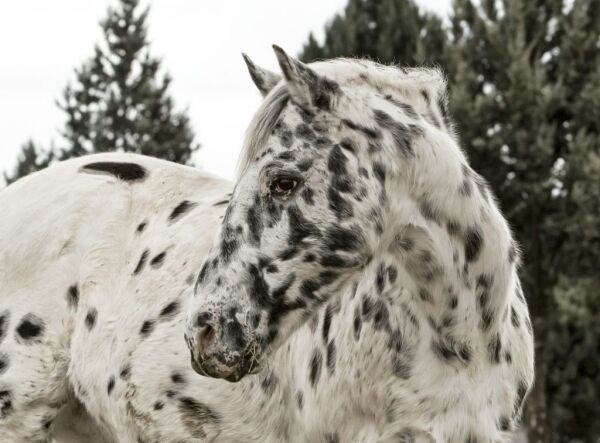
The breed is best known for loves of spots! (Source: Pixabay)
66. The sport of “Reining” is a Western discipline that includes some exciting movements like spins and sliding stops.
67. Horses usually reach about 90% of their full adult height by two years old, but will continue to fill out and mature physically until they’re four or five.
68. Author Donna Campbell Smith wrote “The Book of Draft Horses: The Gentle Giants That Built the World.” In her book, she discussed a pair of Shire draft horses in 1924 that pulled 50 tons, or 100,000 pounds.
69. When horses jump on grass, many riders will screw little metal spikes into the bottom of the horse shoes. These “studs” give the horses extra traction so they don’t slip.
70. Because horses’ eyes are located on the sides of their heads, they have blind spots where they can’t see anything. That’s why we should always avoid standing directly behind them. There’s also a small area directly in front of their face that they can’t see.
71. Some horses are part of therapeutic riding programs that help people with physical and mental challenges learn to work with and ride horses. These horses must be especially gentle and patient.
72. The part of the mane that comes down between the horses’s ears is called a “forelock.” It’s similar to human bangs, and riders often braid the forelock and the rest of the mane for competitions.
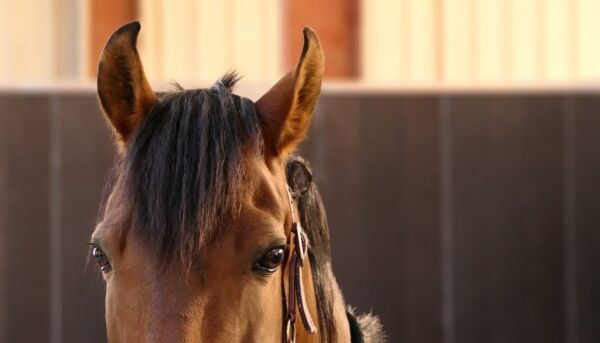
Horse forelock (Source: Pixabay)
73. Three-day eventing is a sport that combines three separate disciplines: dressage, show jumping, and cross country.
74. Horses living together in groups work out a distinct hierarchy, meaning each horse knows which other horses are higher or lower than it in the pecking order. The horses in charge eat first, sleep first, and get to move other horses out of their way.
75. A “puissance” is a special kind of high jump competition. The most common type of jump is a big wall made from fake stacked bricks that will fall down if the horse touches them.
76. Riding a horse without a saddle is called “bareback.”
77. Some riders use “spurs,” which are metal attachments that strap onto the heels of their boots. When used correctly, they allow riders to communicate more subtly with their horses.
78. Horses should have access to clean water all day.
79. When a mare is ready to have a baby, she’s often moved into an extra big stall called a “foaling stall.” This gives her plenty of space to lie down and decreases the risk of injury to her and her foal.
80. When you feed a horse a treat from your hand, make sure to press all your fingers flat — palm up. This makes it easier for the horse to eat the treat without accidentally nibbling your fingers!
81. Horses can be taught to sit, but it’s not a natural position for them. You’ll rarely (if ever) see a horse sit on its own.
82. There are some special types of saddles that allow you to sit with both legs on the same side. These are called “sidesaddles,” and they were historically used for women. Now, of course, women ride horses in traditional saddles.
83. The most famous horse race in the US is called the Kentucky Derby.
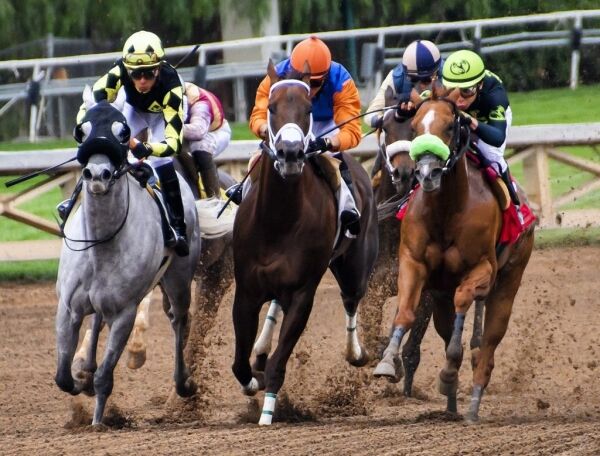
Horse race (Source: Pixabay)
84. Endurance horses are conditioned to be ridden very long distances, much like human marathon runners. Their races typically span multiple days and hundreds of miles. The longest endurance race in the world is the Mongol Derby, in which Mongol ponies and their human partners travel 1,000 km in under 10 days.
85. Horses can see much better in the dark than humans. With a little preparation, people even trail ride at night!
86. A halter, typically made of thick rope, is placed around the horse’s head to lead it around.
87. The most common type of horse bit is called a “snaffle.” It’s made of metal, like most bits, but gentle on the horse’s mouth.
88. Sometimes people attach a long rope to a horse’s halter and ask it to move around them in a circle. This is called “lunging,” and it can help the horse get rid of some of its extra energy.
89. Horses can tell each other apart by smell. They also use their incredible sense of smell to distinguish its owner from other people, and identify predators and food.
90. You shouldn’t let horses touch noses unless they live together. They could transfer illnesses between them.
91. Dressage is a sport where horse and rider execute a pattern between a set of letters posted around the outside of an arena. Dressage riders wear black and white clothing, and the communication between them and their horses should be as invisible as possible.
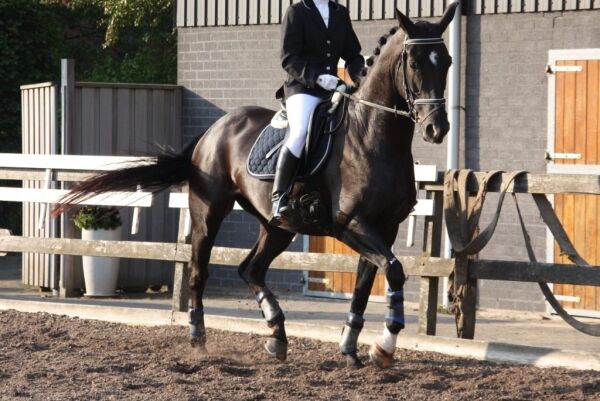
Dressage (Source: Pixabay)
92. Horses are easily startled, so you should always move slowly and intentionally around them. It helps to talk softly and let them know where you are, too.
93. Many horses get supplements, along with their normal hay and/or grain. Supplements exist for a wide variety of purposes, from making the horse’s coat shinier to adding essential nutrients.
94. Some horses are very reluctant to leave their friends and be led or ridden away from them. These horses are called “herd-bound.” or “buddy sour.”
95. When a horse “gallops” (i.e. runs at full speed), there’s a moment when all four feet are suspended above the ground.
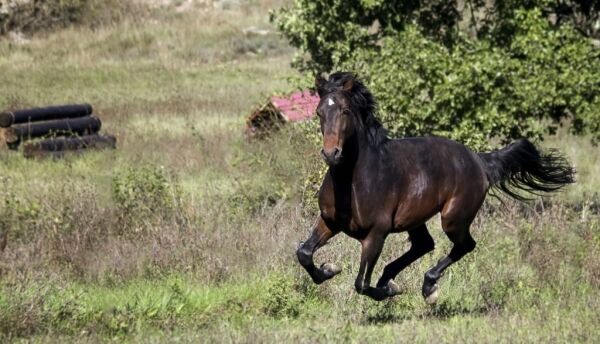
Moment of suspension (Source: Pixabay)
96. Horses have really good memories.
97. If they have light skin/hair, horses can get sunburned like humans. Some get special horse sunscreen to keep them more comfortable.
98. A trained veterinarian or equine dentist can estimate a horse’s age by looking at its teeth.
99. In a herd of wild horses, the one in charge is the dominant mare — not the stallion.
Frequently Asked Questions
Q: What do children learn from horses?
Children can learn so many things from horses. One important lesson is about putting others first. They learn to put the needs of their horses before their own, especially when grooming and untacking.
Patience is another big one. A kid has to be patient both with the horse and themselves because learning takes time.
Horses teach kids about persistence and not giving up. A stubborn horse helps a young rider learn how to persist when faced with a challenge.
Horses also teach kids about the value of hard work. Horses require hard work and you often walk away tired and dirty, but the experience is very satisfying.
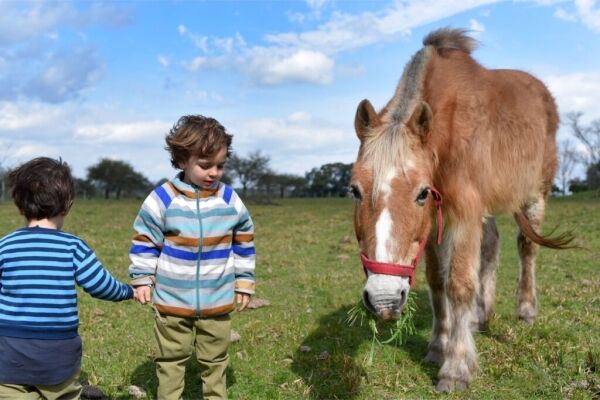
Q: Do horses have two brains?
Horses, like humans, have one brain with two sides, connected by a structure known as the corpus callosum (which allows the two hemispheres to communicate).
However, the corpus callosum is less developed in horses, meaning what a horse sees or learns from one side isn’t always communicated to the other. This is why it’s important to do things in training from both sides initially, like tacking up and sacking out.
This also is why a horse may spook at the same object twice, once from each side.
Q: What’s so special about horses?
Horses are exceptional communicators, and as herd animals, display a wide range of emotions. This enables them to establish strong bonds with humans. They are also intelligent, majestic, and graceful.
Q: Are horses good with children?
Horses generally love children, appearing to sense their vulnerability and need for protection. Horses often demonstrate their gentlest behavior when children are around, becoming calmer and more comforting than they may be around adults.
Q: What age should a child start horseback riding lessons?
By the age of four, children can follow basic instructions and start developing a feel for horseback riding. By the time they reach nine years old, they can move onto more challenging activities, like jumping.
